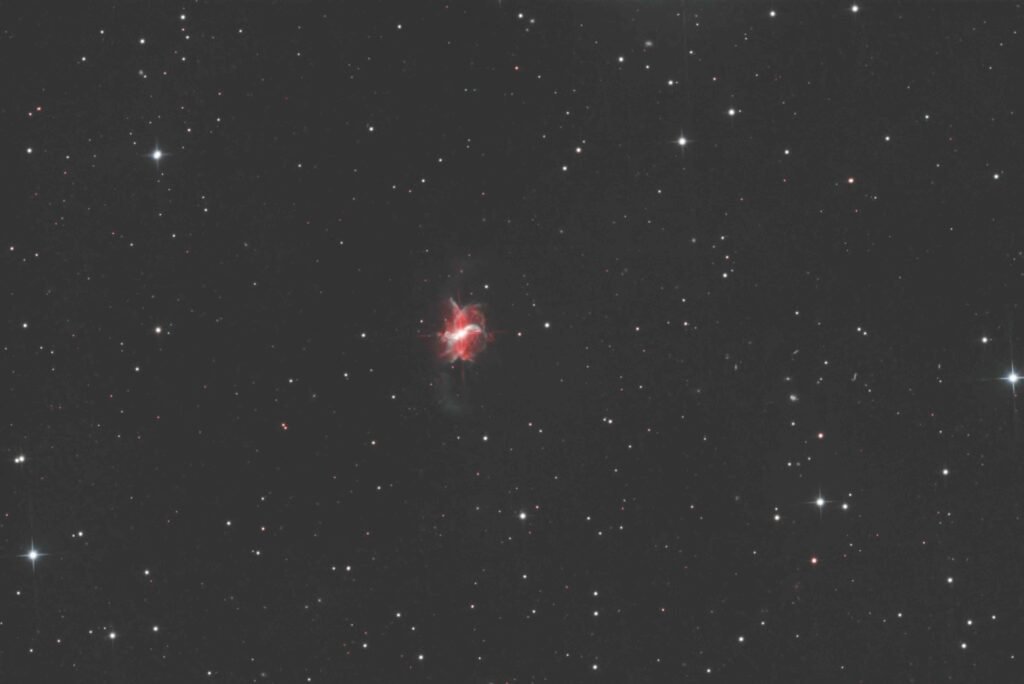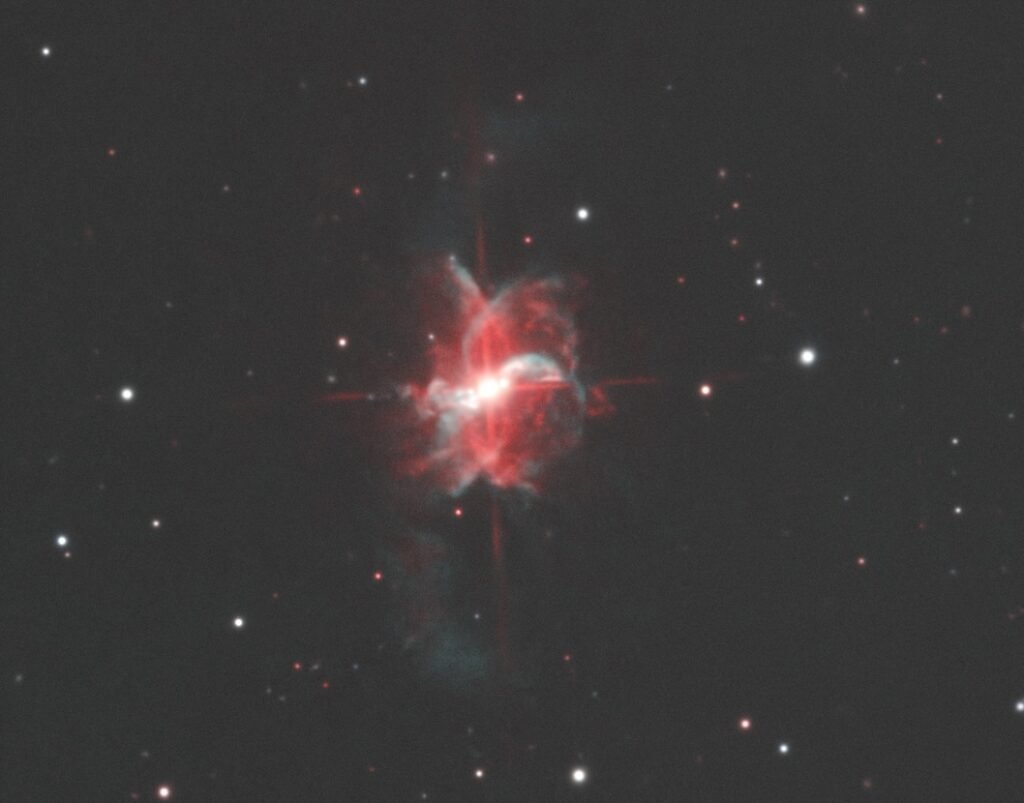Hamish asked me to collected some Ha and Oiii data of R Aqr. so he could map that to his spectroscopic data.
Here are HOO images of that system. Very small so quite a big crop on one of the images. It was collected on my Quattro F4 12” Newtonian at 1200mm, EQ8RH-Pro mount, QHY268M.
This is a very interesting system with the following details. It is a Symbiotic Binary System of a Mira-type red giant and a white dwarf.
Measurements place R Aqr at approximately 218 pc (~710 light-years) from earth. (arXiv, Wikipedia, chandra.harvard.edu)
The red giant is a Mira variable, pulsating with a period of around 390 days, and varying in brightness by up to a factor of ~750 (i.e., from magnitude ~5.2 to ~12.4). (Wikipedia, European Space Agency. The binary orbit spans roughly 44 years. (Wikipedia, European Space Agency) and ALMA observations show a physical separation of about 45 milliarcseconds, corresponding to ~10 AU at 218 pc. (A&A Publishing)
R Aqr is surrounded by a complex nebula (Cederblad 211), likely shaped by past outbursts, perhaps as long ago as AD 930 when historical Japanese & Korean chronicles in 930 AD described a “guest star” near Aquarius. That was possibly a nova-like eruption of R Aqr., and possibly again in AD 1073/1074. (Wikipedia, A&A Publishing)
The system displays a bipolar hourglass-shaped nebula with inner and outer components, and features a prominent S-shaped jet. (arXiv, Wikipedia)
The outer nebula is estimated around 600–650 years old, while inner structures are younger—hundreds of years old. (arXiv, Wikipedia)
The jets exhibit curved, helical structures and knots, traced in high-resolution HST imaging. (arXiv)
Harvard University has a video animation of the system:
https://chandra.harvard.edu/photo/2017/raqr/animations.html


Leave a Reply